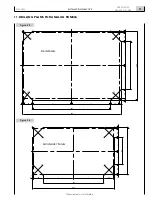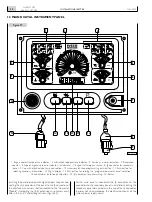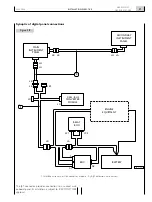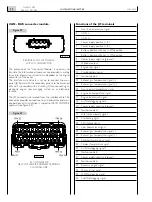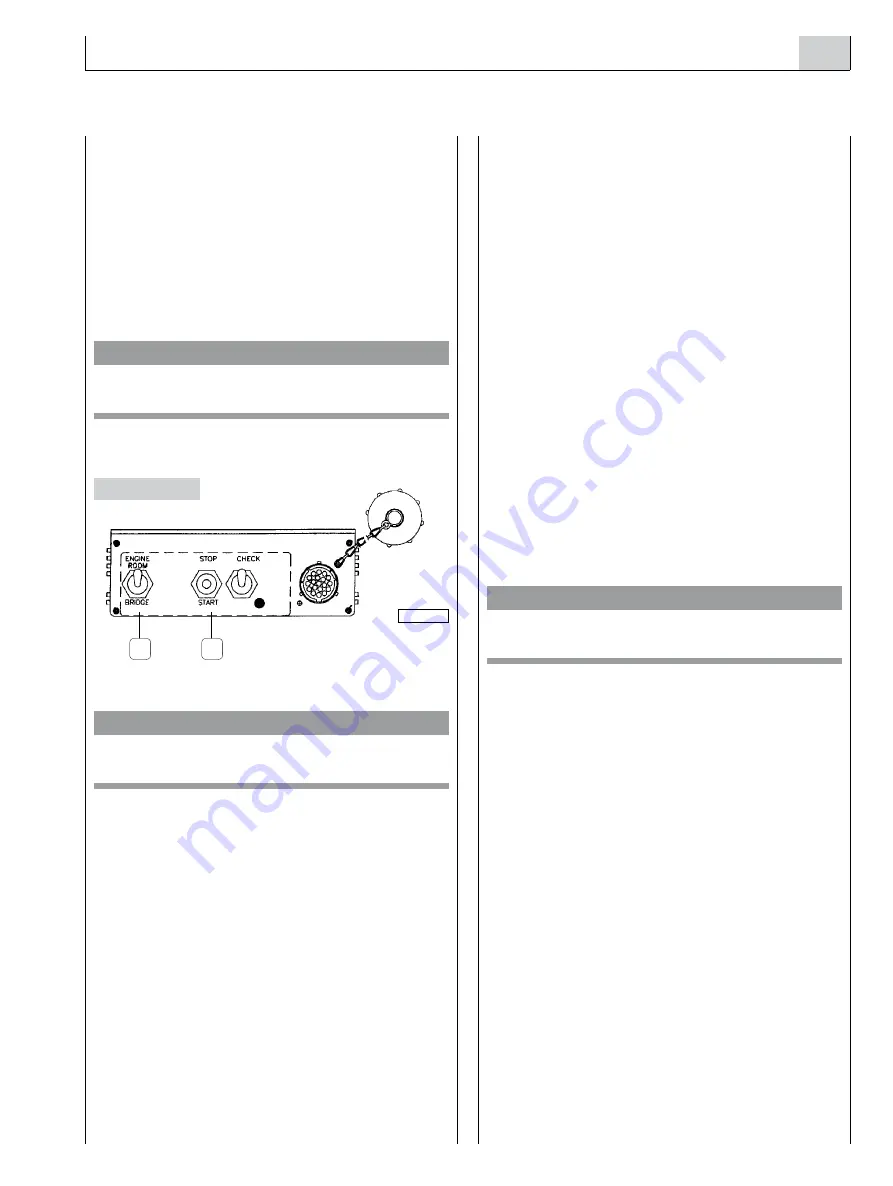
installation directiVe
4
MAY 2006
N40 ENT M25
N60 ENT M37-M40
19. FIRST ENGINE START
Before starting the engine, please make sure the sea water
gate valve is open, check the levels of the lubricating oil and
of the engine coolant, and complete venting the air from the
fuel feed loop, acting on the hand pump of the pre-filter or
with the aid of a dedicated electrical pump.
Loosen the vent fitting on the pre-filter and operate the
pump until only fuel without air flows out.
Tighten the vent fitting and continue pumping during the
initial start-up phases.
Make sure that the fuel that flows out of the fitting is not
dispersed in the environment.
CAUTION
never attempt to vent the high pressure system, as this is
useless and extremely dangerous.
Start-up procedures
The electrical equipment of this engine allows to start it from
the “engine room” and from the “bridge”.
NOTE
a few moments after start-up, make sure sea water is cor-
rectly drained from the relevant circuit.
starting the engine from the bridge
This is allowed only if the Relay box switch (1) is in the
“BRIDGE” position.
Start the engine and let it run until the idling rpm has fully
stabilized (see also the Chapters on the instrument panels).
starting the engine from the “engine room”
Moving the Relay box switch (1) to the “ENGINE ROOM”
position (which must absolutely not be done when the
engine is running), regardless of the position of the key
switch on the indicator and control panel, enables the use of
the adjacent STOP - START push-button (2).
It will thereby be possible to start and stop the engine with
complete independence from the bridge controls.
Moving the switch (1) back to the “BRIDGE” position, inhib-
its use of the “START-STOP” push-button positioned on
the Box, allowing the engine to be started only from bridge
controls.
RPM control
To allow easily to control engine RPM from the “engine
room”, a simultaneous acceleration/deceleration function
(SET+/SET-), active only when the switch (1) is in the
“ENGINE ROOM” position, has been implemented in the
“start” function.
acceleration (set +)
If, when the engine is running, the “start - stop” push-button
is held down in the “start” position, then engine rpm are pro-
gressively increased; the increase ends when the push-button
is released, allowing the engine to run at the desired rpm.
deceleration (set –)
Moving the “start - stop” push-button back to the “start”
position, after releasing it during the rpm increase phase, a
progressive reduction in rpm is obtained; when the push-but-
ton is release, the function is inhibited and the rpm reached
at that point is maintained.
note:
Further action on the push-button will alternatively
increase - decrease engine rpm.
The “stop” function takes priority and always stops the
engine.
CAUTION
never operate the “bridGe - enGine room” switch
when the engine is running.
Once the first start-up phase is complete, verify that:
o
There are no liquid leaks from the coolant loop pipeline
junction hoses.
o
There are no exhaust gas leaks into the hull.
o
Complete the instrument panel operation tests as
described in the related Chapters.
o
Verify that the power supply voltage across the battery,
after about 15 minutes with the engine running, is no
less than about 13 V.
o
Stop the engine and delete any “errors” which may have
been stored in the injection system ECU during the
stabilization phases. For the deletion procedure, refer to
Chapter 20.
2
1
04_074_N
Figure 4
Summary of Contents for NEF N40-ENT-M25
Page 64: ...INSTALLATIONDIRECTIVE 64 N40 ENT M25 N60 ENT M37 M40 MAY 2006 ...
Page 69: ......

